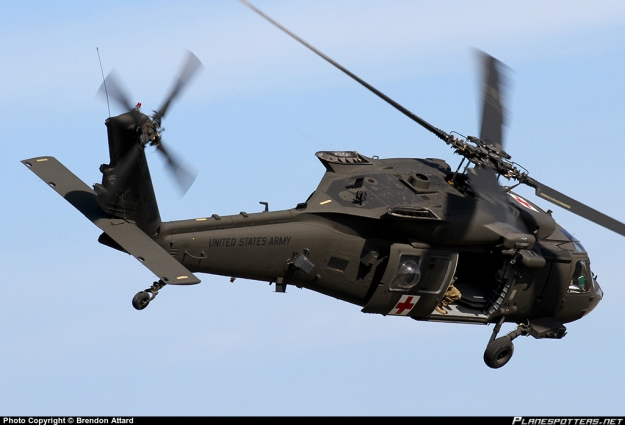Safety And Security First: Vital Action In UH 60 Helicopter Upkeep
Safety And Security First: Vital Action In UH 60 Helicopter Upkeep
Blog Article
Browsing Uh 60 Helicopter Regulations and Compliance Needs

Regulatory Framework Overview
The governing structure regulating UH-60 helicopter operations includes a facility collection of criteria and policies established by air travel authorities. These laws are made to ensure the safe and effective operation of UH-60 helicopters in different settings. The Federal Air Travel Management (FAA) plays a central duty in establishing and imposing these regulations, which cover a variety of operational aspects, consisting of airworthiness requirements, pilot qualifications, upkeep demands, and operational procedures.
Compliance with these policies is crucial for helicopter drivers to preserve the highest degrees of safety and security and functional integrity. Failure to stick to these policies can result in serious consequences, consisting of crashes, injuries, and regulative assents. Helicopter drivers must stay notified concerning the most current regulatory advancements and make certain that their operations are in full compliance with all appropriate guidelines and requirements.
Airworthiness Evaluations and directives
In the middle of the regulatory structure governing UH-60 helicopter procedures, an essential focus pushes compliance with Airworthiness Directives and carrying out comprehensive assessments to promote safety requirements and operational integrity. Airworthiness Instructions (ADs) are provided by aeronautics authorities to resolve harmful conditions in airplane, including the UH-60 helicopter, and required specific activities to be taken by operators or owners. Compliance with ADs is required, and failing to stick to these instructions can cause significant repercussions, consisting of grounding of the airplane.
Normal evaluations are extremely important to making sure the airworthiness of UH-60 helicopters. These evaluations include a series of checks, from regular day-to-day evaluations conducted by pilots before and after flights to more detailed arranged maintenance evaluations executed by accredited auto mechanics. Furthermore, unique examinations might be called for based on specific conditions or occurrences. By sticking to a strict assessment regimen, operators can discover and resolve prospective concerns immediately, thus enhancing the security and integrity of UH-60 helicopter procedures.
Pilot Qualifications and Training

Pilot training for UH-60 helicopters is thorough and covers a wide variety of subjects, consisting of airplane systems, emergency situation treatments, navigation, and mission-specific training. Additionally, pilots undertake simulator training to exercise different emergency circumstances in a controlled setting. This training helps pilots create the essential abilities to deal with difficult situations effectively.


Moreover, recurring training and professional advancement are important for UH-60 pilots to remain present with the most up to date regulations, innovation, and best practices. By purchasing pilot credentials and training, operators can boost safety, maximize efficiency, and make certain compliance with governing requirements in the procedure of UH-60 helicopters.
Functional Limitations and Requirements
Pilot certifications and training serve as the foundation for understanding the functional restrictions and demands linked with UH-60 helicopter operations (uh 60). These operational constraints are placed in place to ensure the security of the team, passengers, and the aircraft itself. Functional limitations might consist of variables such as weather, weight restrictions, elevation restrictions, and functional boundaries. It is crucial for pilots to be well-versed in these restrictions to make educated decisions throughout flight operations. Additionally, compliance needs, such as sticking to specific trip courses, communication protocols, and emergency situation treatments, are essential for keeping functional safety and security and regulatory conformity. Pilots have to stay present with all functional limitations and requirements with regular training, instructions, and assesses to minimize risks and make certain risk-free and efficient UH-60 blog here helicopter operations. By prioritizing adherence to these operational guidelines, pilots can boost the overall safety and performance of their goals while promoting governing standards.
Emergency Situation Treatments and Conformity Screening
Efficient emergency treatments and extensive compliance testing are critical components of preserving operational security and governing adherence in UH-60 helicopter operations. Emergency procedures encompass procedures for various circumstances, consisting of engine failings, fires, hydraulic concerns, and much more. Pilots and crew participants must be well-versed in these procedures to respond quickly and efficiently in emergencies. Regular conformity screening makes certain that the helicopter meets all governing requirements set forth by aeronautics authorities. This testing includes comprehensive inspections, checks, and analyses to validate that the aircraft is airworthy and in conformity with all suitable laws.
Conformity testing likewise reaches tools onboard the UH-60, such as communication systems, navigating instruments, and safety and security gear. Ensuring that all tools is operating appropriately and meets governing requirements is necessary for safe operations. In addition, conformity testing may entail simulations of emergency scenarios to assess the team's feedback and the helicopter's efficiency under tension. By focusing on emergency procedures and conformity testing, UH-60 operators can mitigate dangers and show their dedication to security and governing conformity.
Verdict
Finally, adherence to regulative structure, compliance with airworthiness regulations, pilot certifications and training, operational constraints, and emergency treatments are important for browsing the guidelines and requirements of running a UH-60 helicopter. uh 60. It is crucial for operators to focus on safety and ensure full compliance with all suitable laws to keep the airworthiness and operational integrity of the airplane
Browsing the regulative landscape surrounding UH-60 helicopter operations requires a nuanced understanding of the elaborate web of guidelines and conformity needs.Conformity with these guidelines is important for helicopter drivers from this source to preserve the greatest degrees of safety and security and functional honesty.Amidst the regulative structure controling UH-60 helicopter operations, a crucial focus lies on compliance with Airworthiness Directives and carrying out thorough news inspections to promote safety and security criteria and operational dependability.Efficient emergency situation treatments and detailed conformity screening are essential components of preserving operational safety and regulative adherence in UH-60 helicopter operations. Regular conformity testing makes sure that the helicopter satisfies all governing demands set forth by aviation authorities.
Report this page